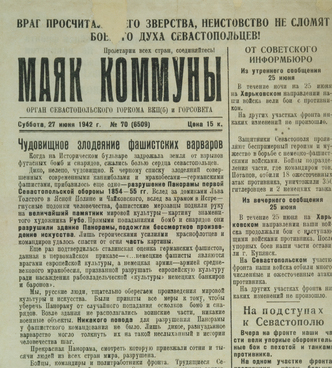The museum’s collection includes ship nails and a screw. Such elements were used to fasten the wooden sheathing and details of the underwater part of ships. They were made from copper in Russia in the mid-19th century. The nails were lifted from the bottom of the Eupatoria Bay by amateur scuba divers. They also found wooden parts of the ship’s hull, which belonged to a Russian sailing ship, as well as fragments of its copper hull and an anchor dated 1852.
In the mid-19th century, there were two ways to make nails: they were either cast from iron and then fired, or they were manually forged from copper. The exhibits presented in the museum were forged from red copper. Among the blacksmiths of that time, there were special craftsmen — nailmakers, who specialized in nails.
In Russia, nailmakers have been known since the 13th century. Their services were expensive: at that time, a whole ram was given for a handful of forged nails. They were used both at construction sites and for shoeing horses.
The nails were produced the following way: a worker took an iron rod and heated it in a forge, then pulled it back with hammer blows on an anvil. The workpiece was sharpened at one end, and at the other — where the future nail head was supposed to be — a thickening was left. Then the rod was cut off and inserted into a bar with a special hole — a nail header. After that, the head was flattened with a hammer.
Factory production of nails became widespread after the invention of special nailing machines. At the end of the 18th century, they appeared in Great Britain: at first, they were simple turning rollers — machines on which the metal was swaged, stretched and given the necessary shape. The first nail factory in the British city of Birmingham opened only in the early 19th century.
In Russia, wire nails began to be mass-produced in 1872. They were made by cold forging, which greatly simplified and automatized the production: the metal was shaped not by heating, but by mechanical action.
Simple nails were made from soft iron. Ship, roofing and small upholstery nails for finishing work could be made from non-ferrous metals.
In the 19th century, one of the largest shipbuilding enterprises was the Nikolaev Admiralty, which included shipyards, workshops, warehouses. In 1810, the workshop of the Nikolaev Admiralty produced 376,200 nails for the Lesnoy ship, 244,330 for the Minerva frigate, and 137,500 for other water transport.
The ship nails were the longest and thickest, measuring 6 to 15 inches (15.2 to 38 centimeters) in length. As a rule, nails were ordered in poods. For one pood or 16 kilograms, there were from 35 to 150 pieces.
In the mid-19th century, there were two ways to make nails: they were either cast from iron and then fired, or they were manually forged from copper. The exhibits presented in the museum were forged from red copper. Among the blacksmiths of that time, there were special craftsmen — nailmakers, who specialized in nails.
In Russia, nailmakers have been known since the 13th century. Their services were expensive: at that time, a whole ram was given for a handful of forged nails. They were used both at construction sites and for shoeing horses.
The nails were produced the following way: a worker took an iron rod and heated it in a forge, then pulled it back with hammer blows on an anvil. The workpiece was sharpened at one end, and at the other — where the future nail head was supposed to be — a thickening was left. Then the rod was cut off and inserted into a bar with a special hole — a nail header. After that, the head was flattened with a hammer.
Factory production of nails became widespread after the invention of special nailing machines. At the end of the 18th century, they appeared in Great Britain: at first, they were simple turning rollers — machines on which the metal was swaged, stretched and given the necessary shape. The first nail factory in the British city of Birmingham opened only in the early 19th century.
In Russia, wire nails began to be mass-produced in 1872. They were made by cold forging, which greatly simplified and automatized the production: the metal was shaped not by heating, but by mechanical action.
Simple nails were made from soft iron. Ship, roofing and small upholstery nails for finishing work could be made from non-ferrous metals.
In the 19th century, one of the largest shipbuilding enterprises was the Nikolaev Admiralty, which included shipyards, workshops, warehouses. In 1810, the workshop of the Nikolaev Admiralty produced 376,200 nails for the Lesnoy ship, 244,330 for the Minerva frigate, and 137,500 for other water transport.
The ship nails were the longest and thickest, measuring 6 to 15 inches (15.2 to 38 centimeters) in length. As a rule, nails were ordered in poods. For one pood or 16 kilograms, there were from 35 to 150 pieces.



